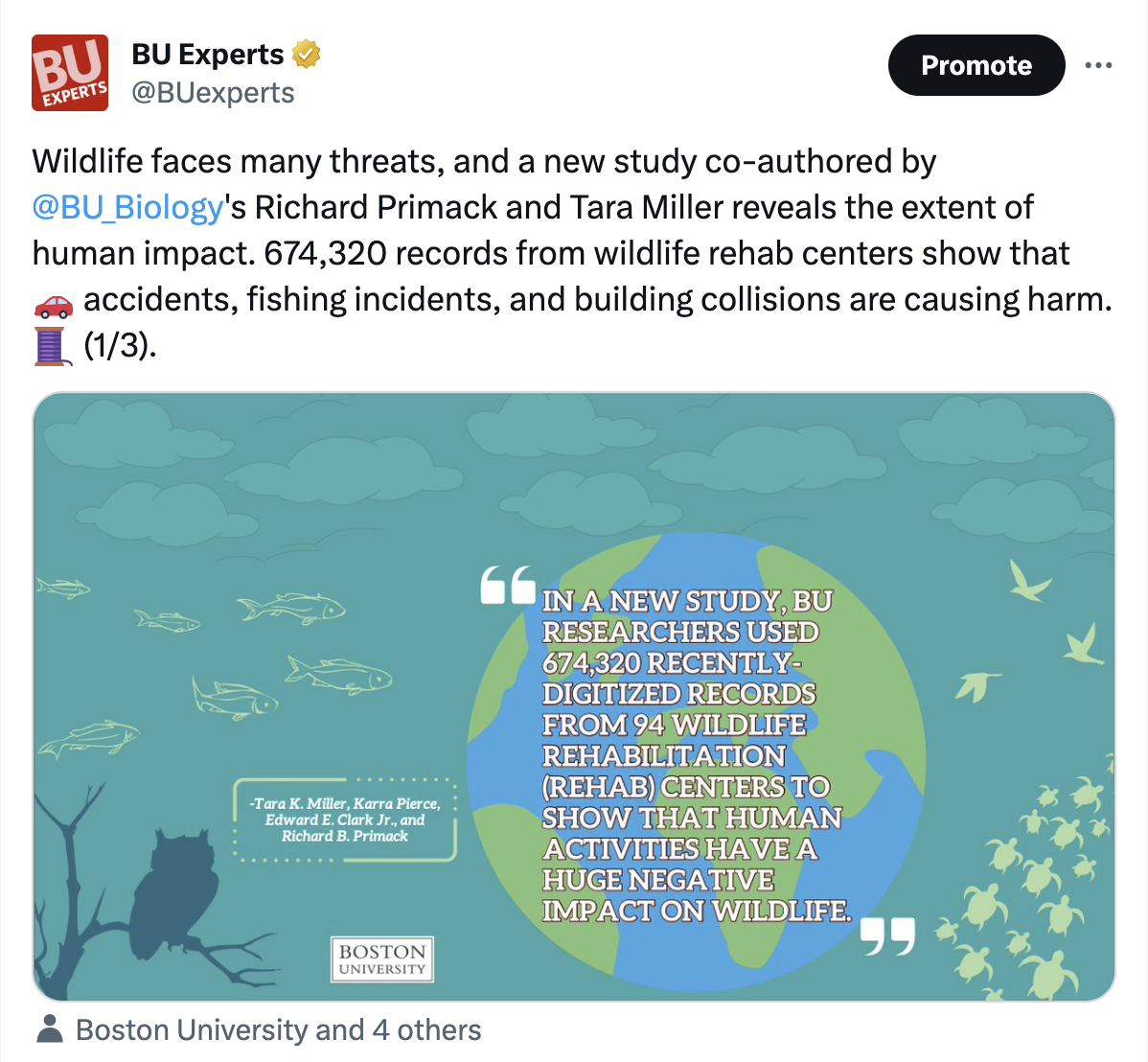Research
Research Interests
Climate Change Ecology and Science Policy
I am interested in studying the responses of plants and wildlife to climate change. My research focuses on changing phenology (the timing of seasonal biological events), the potential for ecological mismatches as timing and ranges shift, and the impact that climate change may have on wildlife health and diseases.
I am interested in science policy and education. I strive to do research that is applicable to policy and management, as well as to learn from decision-makers and managers. I also engage in science education and communications, from writing blog posts to giving presentations to K-12 students.
Mismatches Between Trees and Wildflowers
We used herbarium specimens (preserved plant specimens) to investigate how trees and wildflowers are responding to warming temperatures. We found that six common tree species are responding more strongly to warming temperatures than six forest wildflower species: the tree species advance their leaf-out times faster than the wildflowers advance their flowering times. This results in a mismatch between the trees and wildflowers, as many early-spring wildflowers rely on early-season sunlight to photosynthesize and store carbon. Under the warming conditions of climate change, wildflowers may lose a critical period of full sunlight and canopy tree shade them out, and some wildflower species may decline.

Wildlife Rehabilitation and Wildlife Health
I am using records from wildlife rehabilitation centers to study trends in wildlife health and phenology. In particular, I am looking at 1) how climate change may affect the number of animals affected by diseases like West Nile virus, 2) how human activities may affect where and how many animals are affected by lead and pesticide toxicity, and 3) how climate change is changing the timing of animals' reproduction.





Thoreau Fruiting Phenology
I compared two datasets of fruiting phenology -- observations made by Henry David Thoreau and information collected from herbarium (plant museum) specimens -- to determine how we can use and compare different historical datasets to study the effects of climate change on fruiting phenology.
We found that both Thoreau's observations and herbarium specimens detect similar patterns of plant fruiting times, confirming that historical observations and data from museum specimens can be combined to create larger and more powerful data sets for climate change and ecological research. However, the museum specimens are collected over a larger area and over more years than Thoreau's observations, which were collected over 10 years around Walden Pond and elsewhere in Concord. As a result, the museum observations show an earlier start to fruiting and later ending than Thoreau's observations.